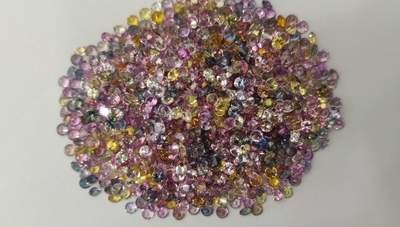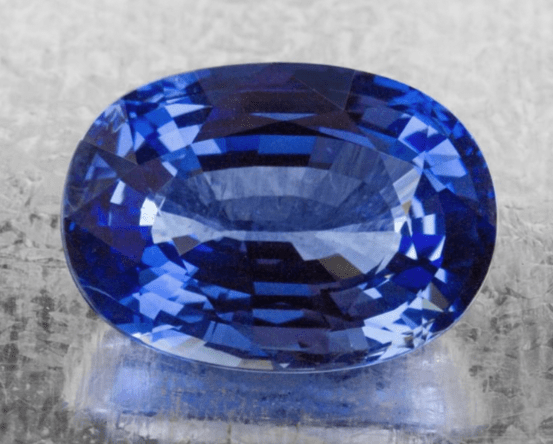Unheated Sapphires vs Heated Sapphires in 5 minutes
Today’s article will be about the difference between Unheated and Heated Sapphires, how to identify whether a sapphire is heated or whether the sapphire is unheated, how each type has a different buyer in the marketplace, the different types of treatments in Sapphires today.
Introduction
Sapphires, which are the third hardest mineral on the Mohs scale of hardness, are some of the most common gemstones, commonly worn in jewelry. If you talk about unheated and heated Sapphires, then you will come to know that there is a big difference between both the Sapphire categories. The price also varies largely between the treated and untreated sapphires. The Natural Sapphire, also known as Untreated sapphire or Unheated Sapphire, are exceedingly trendy and are more of an “Investment type” due to no treatments being present in them.
In the market, almost 95% of the Sapphires are heat treated. The higher amount of treatment in the sapphire, the lower the price, as the corundum’s rarity creates its price. There are different levels of heat treatment that affect the price of Sapphire (However most labs in 2016 only give a Heated and Unheated certificate). Rubies are more valuable, which is why Gemstone laboratories can certify whether the Ruby is H1, H2, H3. Or the extent of heat in the ruby.
If you are a gemstone buyer then you should know how to distinguish between unheated and heated Sapphire. This is a very important skill a buyer should learn. If you do not want to be scammed for what you are buying, then you should check the certification of the treatment and for that, you should know about the certifications. Oh, we also have a real sapphire color chart of blue sapphire so you can see the different colors.
The difference between Unheated and Heated Sapphire is like the difference between processed and natural food. Natural food is always healthier than processed food. The heat-treated Sapphire lost its effectiveness almost to zero.
Unheated Sapphire
This is true that the gemstone market is flooded with heat-treated Sapphires but, it is not impossible to find Unheated Sapphire in the market. Unheated Sapphires are rare and expensive, but available. Our sources of Natural, Unheated Sapphires are Madagascar, Australia, Sri Lanka, and Thailand.
View this post on Instagram
The Natural unheated Sapphires are also available in different colors like yellow, white, pink, violet, and violet-blue. We also deal in Blue Sapphires with large sizes, over 2 carats, from Madagascar and Australia. The Unheated Sapphire has natural inclusions like fingerprint inclusions, rutile needles that are fine, intact, and intersecting at 60 degrees angle in the same plane or other fine needles at nearly right angles, intact two-phase inclusions, unaltered mineral inclusions, clear or opaque color, color zoning, and color banding, etc.
Heated Sapphire
View this post on Instagram
Heat-treatment is a common practice to improve the clarity and enhance the color of Sapphire. A Sapphire is “Cooked” in furnaces to a temperature between 500 and 1800 degrees Celsius, which is near to the melting point of Sapphire. Some of the treated Sapphires, which are slightly heated, are not cheap. Good ones still cost upward at $ 3000 per carat.
If you are wanting to Understand quality and color in Blue sapphires then here is a brilliant video that got us 50,000 views and counting so far.
Here is a quick 3 step guide on identifying how to check to identify whether your sapphire is heated or unheated.
Things you will need before you start the process:
- x20 loupe
- The stone (sapphire)
- Tweezer
- Understand the infographic of heated/unheated before proceeding
Once you have understood the heated/heated signs of broken needles and halo around the crystal, you can start the process as per below:
1. Use the tweezer to pick up the stone (Sapphire) in the below position:
2. Hold the x20 loupe inside your fingers and get a firm grip on the stone’s view under this loupe. After few practice sessions, you will be able to get a clear view, as with slight changes of the angle you will find the stone will be a blur. You have to get the view in a perfect clear sharp focus.
3. See the stone from different angles and try to find the signs of heat treatment or if you cannot, then make sure you get confirm signs of no heat treatment.
Other Common Treatments in Sapphires
Some of the other treatments are as follows:
Surface Dyes: This is a temporary treatment that can modify the color of the gem. When a seller wants to pass off an imposter gemstone as a Sapphire, he uses this treatment. Below is the image, which will clear most of the things.
Fracture Fills: This treatment is used to mask the large and unattractive inclusions and cracks from the stone. This treatment temporarily increases transparency and clarity. It can also change the color of the stone. Below is the image which will clear your doubts.
Beryllium: Beryllium treatment is used to change and enhance the color of Sapphire. It is devastating and expensive to expose this treatment in Sapphire. You can see an assortment of Sapphire heating with Beryllium. You can see that many of them change from yellow to orange and many remain blue.
Diffusion Treatment: The most common treatment is the “Diffusion- treated sapphires“. This treatment is an artificial enhancement of color and may be impossible to detect without very sophisticated Lab procedures and instruments. To enhance the color of Sapphire, this heat treatment is provided in a reducing and oxidizing atmosphere.
Irradiation: This treatment changes the color of the Sapphire permanently at the molecular level. This treatment is used to provide colors that are not naturally available. You can see an example in the image below.
Usually, the gemstone labs give certificates of Natural Sapphire and Heat Treated Sapphire. You can see in the images on the internet that in one certificate it is mentioned that “No indication of Heating” in the Treatment Section and in the other certificate it is mentioned that “Indication of heating”, which means that the Sapphire is Natural but heat-treated.
Conclusion:
Here is the conclusion – depending on what your purpose of buying a Heated or an Unheated blue sapphire would be. Each purpose with a decision on what should be chosen.
If you want to Buy Unheated Sapphires, then you must complete all the checks before buying them. Unheated Sapphire holds all of its physical, metaphysical properties and natural properties. I hope this article will help you in Buying Natural Sapphires for your loved ones.
Should you get heated or unheated sapphires?
- The choice is completely yours. Some prefer the ‘flawlessness’ of the heated sapphires that are simply way too alluring whether in color, cut, or appeal. While for many, they love the charm and purity of unheated Sapphires.
- And whichever is your preference, we at Navneet Gems have it in stock for you. Explore the stunning, pink, yellow, blue, loose teal sapphires amidst more colors and even their mixes in our wholesale parti sapphires, resourced from the most unequaled sources.
- And if unheated or natural gemstones are your things, take your pick from our rarer and hypnotizing Australian Parti Sapphires which simply cannot be duplicated in a lab.
Explore our latest collection of unheated or natural gemstones on our Instagram:
View this post on Instagram








